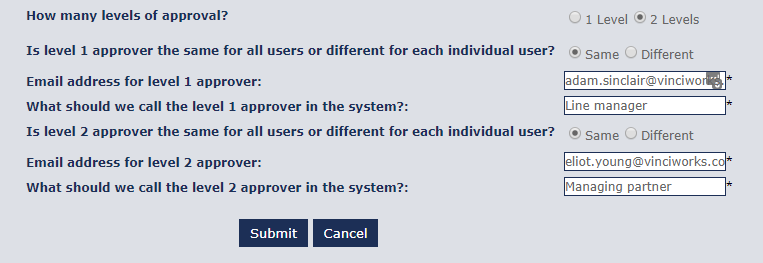New LMS feature: manage activity requests without leaving your desk

Users can now easily request to take on a new learning activity, without leaving the office or writing an email. This new automated feature means administrators can easily authorise and track their staff’s learning activities. With this new feature, users simply click on the “submit activity request form” option on the top right of their […]
Six principles of GDPR that you need to know about

The six principles of GDPR (General Data Protection Regulations) are similar in many ways to the eight principles of the Data Protection Act. While the six principles of GDPR do not include individuals’ rights or overseas transfers, these are included elsewhere in GDPR. One key difference is that under GDPR, you must show how you comply with […]
VinciWorks survey reveals staff at 1 in 4 companies unaware of financial crime policies

Hundreds of thousands of workers in both regulated and nonregulated sector at risk of facilitating tax evasion With the Criminal Finances Act now in full force, VinciWorks has been helping businesses prepare with their new course, Tax Evasion: Failure to Prevent. The new law doesn’t just affect the regulated sector; any business that doesn’t have […]
Treating Customers Fairly (TCF)

The Financial Conduct Authority (FCA) is the conduct regulator for 56,000 financial services firms and financial markets in the UK and the prudential regulator for over 24,000 of those firms. The FCA plays a critical role in the UK economy ensuring that financial markets are honest, Treats Customers Fairly (TCF), small and large businesses and […]
Fourth Directive ready anti-money laundering and counter-terrorism financing policy template

In light of the new Money Laundering Regulations having come into full effect in June, VinciWorks has made available a free anti-money laundering and counter-terrorist financing policy template. The policy can easily be edited to suite your law firm or organisation, your industry and staff. Download template Anti Money Laundering (AML) Procedures The European Union’s […]
Fire Safety in the Workplace – Employer Responsibilities

Fires can break out at any time, and have the potential to cause significant damage, both to property and to human life. Many businesses fail to continue trading following a severe fire. Fire safety is everyone’s responsibility. Given these risks, it is vital that your workforce know what the common fire hazards are and what to […]
Does your organisation comply with the Modern Slavery Act?
Today is Anti-Slavery Day Did you know that on any given day in 2016, 40 million people were victims of modern slavery? 71% of victims were female and 1 in 4 were children. Modern slavery is a global problem, affecting every country in the world. In fact, in the UK, you could be coming into […]
Six ways to well-being

The six ways to well-being have been very carefully researched based on turning the problem on its head in a way and saying “if we look at people who feel well, what do they do?”
Anti-Slavery Day – what is your business doing?

Quick start guide to compliance with the Modern Slavery Act Tomorrow, 18th October, marks UK Anti-Slavery Day. Created by an Act of Parliament to raise awareness of the millions of men, women and children held in slavery and deprived of their basic human freedom, it can also shine a light into the slivers of progress […]
7 Main Causes of Slips, Trips and Falls in the Workplace

According to a recent report released by the Health and Safety Executive (HSE), slips trips and falls are the single most common cause of non-fatal injuries in the workplace. Between 2017/18, there were an estimated 600,000 self-reported workplace injuries, including 71,062 non-fatal injuries, which, in total, accounts for 31% of all major work injuries. In total Slips […]






